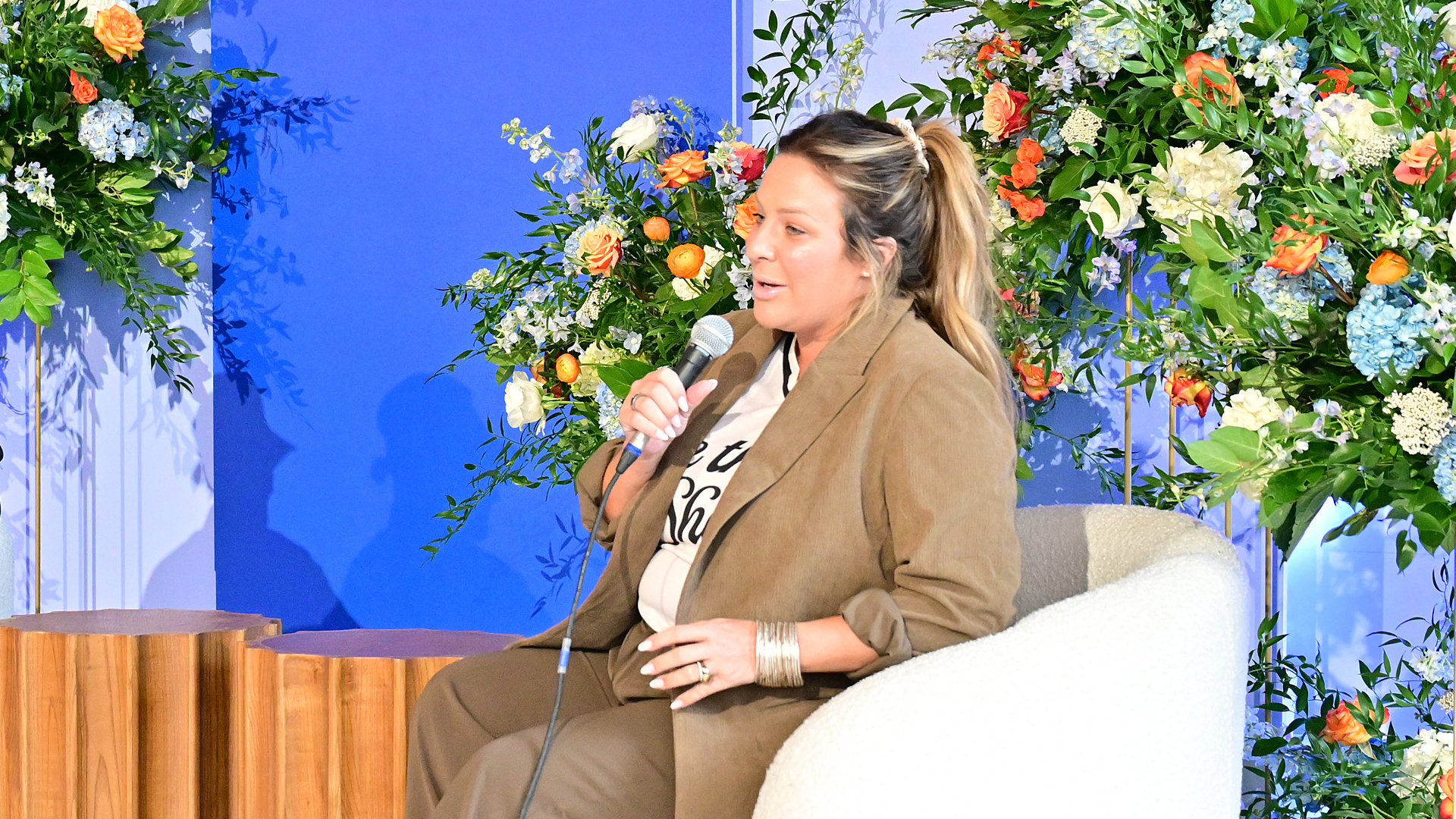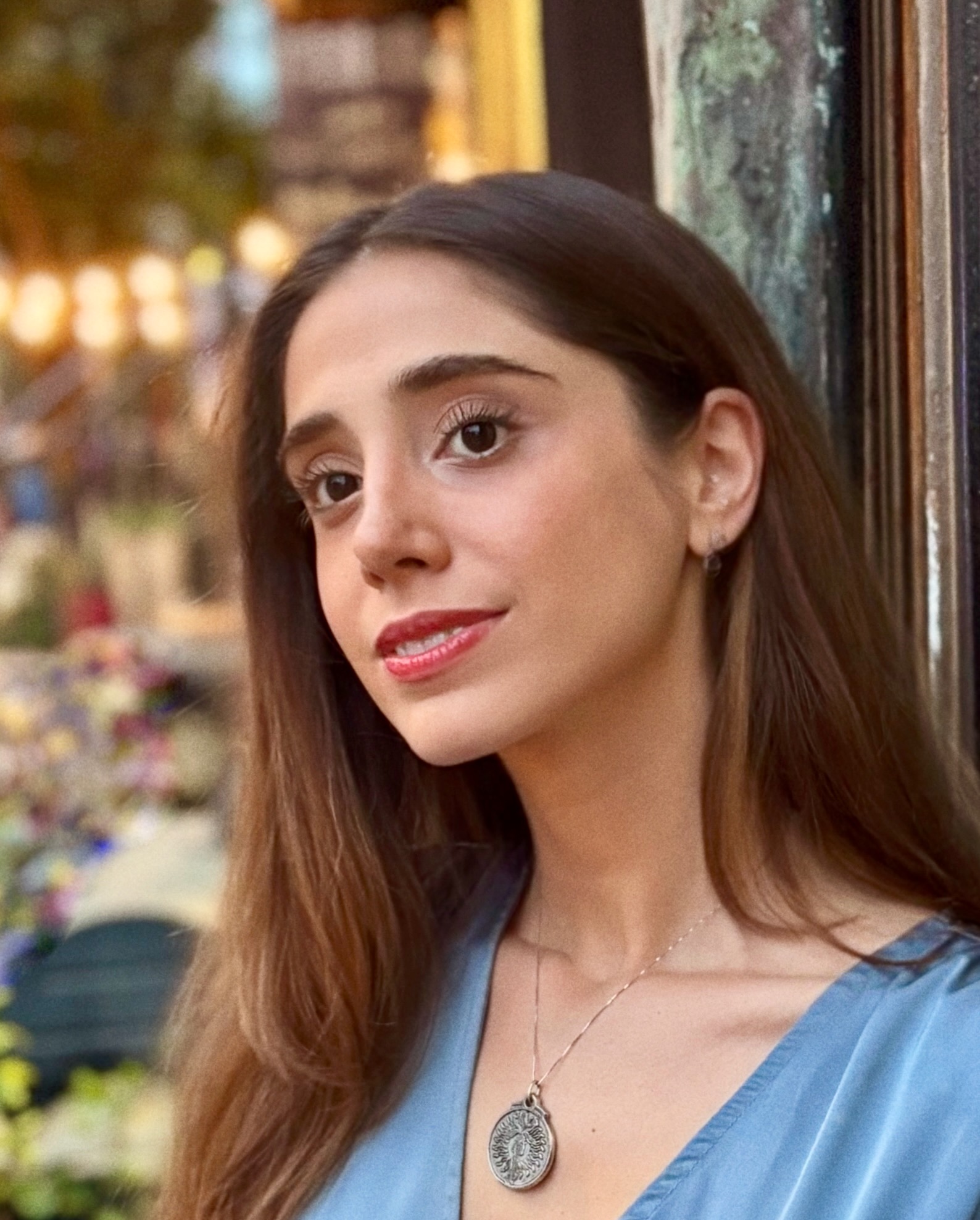The Marie Claire “Power Player” Changing the Future of Women’s Sports
Laura Correnti is seeking to turn the momentum around women’s sports into lasting growth.


When Laura Correnti took the stage at Marie Claire’s Power Play summit in Philadelphia, she made one thing clear: Women’s sports aren’t just having a moment—they’re building a movement. A longtime advertising executive and former partner at the award-winning agency Giant Spoon, Correnti built her career on creating big-impact campaigns before striking out on her own. In 2023, she founded Deep Blue Sports + Entertainment, a firm dedicated to driving commercial investment and visibility in women’s sports.
Marie Claire caught up with Correnti to talk about how she’s redefining the business of women’s sports, what brands are getting right, and why she believes the next five years could be transformational for the game.
What made you take the leap from Giant Spoon to launching Deep Blue Sports + Entertainment?
In 2019, there was a recognizable disconnect in the market following that year’s FIFA Women’s World Cup—the momentum and enthusiasm from fans and consumers following the U.S. women's national soccer team winning their fourth title (the same year players from that team would also win their equal pay lawsuit) exceeded the demand or interest from the advertising, media, and marketing industry. I wanted to understand why. After a multi-year exploration and subsequent roadshow to understand the business of women’s sports, it was determined that there was indeed a market opportunity.
Women’s sports don’t suffer from a product or storytelling issue; rather, the industry has been impeded by operating in systems not designed to support its growth. For example, women’s sports have largely been transacted on and measured by the same key performance indicators in the advertising and media industry that men’s sports have: reach and efficiency. To date, it’s impossible for women’s sports to thrive in this ad-supported model when game days have historically had little to no broadcast exposure—let alone prime-time positioning—to achieve comparable scale. The system doesn’t align, yet it is being sold as such.
This, we decided, would be the way in for Deep Blue—to apply industry knowledge and expertise as media, marketing, and advertising practitioners to a space that seemingly lacked the same. The rest of our business model would extrapolate from there.
Women’s sports don’t suffer from a product or storytelling issue; rather, the industry has been impeded by operating in systems not designed to support its growth.
When you started Deep Blue, what gap in the sports and marketing world did you feel needed to be filled?
Get exclusive access to fashion and beauty trends, hot-off-the-press celebrity news, and more.
In addition to challenging media models and corresponding ad-buying strategies, we also recognized that while women’s sports were hard to find due to lack of media coverage and storytelling, they were also hard to buy for that same reason—not enough exposure meant minimal inventory for advertisers to purchase.
As such, we determined it would also be necessary to build the marketplace advertisers needed to invest in women’s sports, which led to creating original IP including the iHeart Women’s Sports Network with iHeartMedia (which now has 16 podcasts in market and daily women’s sports reports on 500 broadcast stations in the U.S.) and Next Is Now, a docu-series in partnership with Religion of Sports and Ensemble. These brand-supported projects addressed the need for more content to grow fandom and more inventory to increase ad spend in the industry.
Looking back at your early days in advertising, how did those experiences shape the way you approach elevating women’s sports now?
My experience in the ad business was critical to building Deep Blue, particularly growing up in the industry on the media-buying side. Without the institutional knowledge and hands-on experience to understand how things like media rights and ad spend are inextricably linked, we wouldn’t be able to effectively inform or impact the end-to-end solutions we’re implementing for our clients in the women’s game.
Further, my experience in largely buying men’s sports over the last two decades helped to identify key nuances or gaps in the women’s sports model—including where it should compete for ad dollars, and equally important, where it needs to be treated differently to move the needle on new and incremental opportunities. This has led to effectively making the case for women’s sports being an “and,” not an “or,” for brands when making investment decisions.
Girls who play [sports] become women who lead.
There’s so much energy around women’s sports right now. In your view, what’s going to keep that momentum building?
Incrementally in investment and infrastructure will be key to growth. While we saw an initial burst of activity—from investment to valuations, viewership and ratings spikes to merchandise sales—we are focused on effective measures to ensure long-tail sustainability.
That requires finding incremental pockets of opportunity like building adjacent businesses in the category (commerce, content development, live experiences, etc.) while also iterating and innovating on the infrastructure (purpose-built stadiums and training facilities, data and technology, standards and policies). Those incremental enhancements should compound interest and value, creating a thriving ecosystem for years to come.
Deep Blue has already landed some huge clients. From your perspective, what are brands really looking for when they decide to invest in women’s sports?
Since founding Deep Blue, we’ve observed brands are at various starting blocks—whether iterating on early first-mover positions to compete in a more crowded market or understanding the opportunity in general when entering sports for the first time.
Most are seeking ownable strategies to capitalize on the early stages of the market to generate maximum ROI. As the “get in” rate for women’s sports is still in its infancy with respect to pricing and partnership opportunities, it gives brands the opportunity to test the market—financially and creatively—to determine the best way to generate returns.
Many are learning as they enter that this is not a scale play (in comparison to men’s sports, at least not yet), but it is an engagement play where marketers can convert lifetime-value customers—often new and incremental audiences—who reward brands that get it right.
You’ve worked directly with athletes, teams, and leagues. What have those partnerships taught you?
Deep Blue has brokered a number of league, team, and athlete deals—including Bumble x WNBA, Vagisil x the NY Liberty, MassMutual’s Stay Ready campaign featuring Flau’jae Johnson, Madison Keys, and Christen Press, and programs like the Women of NHRA initiative to bring awareness to women in motorsports. Through it all, having a strategy central to the partnership is key.
We seek to develop partnerships that are transformative versus transactional, focusing on creating value vs. simply driving savings. This requires having reasons to believe, involving league, team, and athlete partners in the briefing process to ensure authenticity, having a deep understanding of audience needs and expectations, and aligning on activation and execution touchpoints that will meet fans where they are for best returns.
Put in the work—there are no shortcuts. I’m a big believer in being a student of the game.
When you think about success at Deep Blue, how do you measure impact beyond just the business side?
Deep Blue is focused on long-tail indicators that exceed the day-to-day bottom line to understand the true impact of our work—that looks like social and economic indicators relative to girls playing and staying in sports, for example.
We’ve learned that over 90 percent of women in the c-suite have played sports at some point in their lives, with over 50 percent of those women having played collegiately—a correlation that suggests girls who play become women who lead. That said, recent studies have pointed out 45 percent of girls are dropping out of sport by the age of 14, largely due to body confidence issues (see Nike x Dove study). What impacts body confidence issues: advertising, media, and marketing. Hence, we believe the work we do plays a critical role in combating that drop-off to ensure girls have every opportunity to build leadership skills through sports that will serve them long after they’re done playing.
What milestones or accomplishments at Deep Blue feel most meaningful to you personally?
We are coming up on Deep Blue’s fourth annual Business of Women’s Sports Summit in April 2026—every year has served as a litmus test for market interest and growth potential.
Each year we have sold out while the diversification of topics covered continues to push the boundaries on what defines or makes up “the business of” women’s sports. What started with programming focused largely on the advertising, media, and marketing industry has expanded to include topics like infrastructure and facilities development, venture capital, merchandising, and more.
This annual marker keeps us honest on where progress is happening, and equally important, where work still needs to be done—informing everything from our broader Deep Blue business plan to daily client strategies.
We stay ready so we don’t have to get ready.
If you imagine the women’s sports industry five years from now, what does that future look like?
Five years from now, our hope is that the women’s sports marketplace is right-sized in the sense that business models accurately reflect the product while serving as catalysts for future growth.
Right now, women’s sports are seemingly more lucrative off the court than they are on when looking at average values of endorsements and content deals, for example, in comparison to league sponsorships or player compensation. I’d love to see this get to parity with more ingenuity and intentional investment to create women’s sports–specific playbooks vs. repeating legacy models that don’t extract or maximize its true value.
What advice would you give to the next generation of women who want to break into sports marketing, media, or entrepreneurship?
Put in the work—there are no shortcuts. I’m a big believer in being a student of the game. For me, this includes reading industry news to start each day, spending time on new subject matter via podcasts, feeds, or niche newsletters, staying curious in meetings and asking questions, being in the room whenever possible (it’s where things happen), and other methods to stay competitive and add value to rooms I’ll enter. At Deep Blue, it’s imperative we stay ready so we don’t have to get ready.

Noor Ibrahim is the deputy editor at Marie Claire, where she commissions, edits, and writes features across politics, career, and money in all their modern forms. She’s always on the hunt for bold, unexpected stories about the power structures that shape women’s lives—and the audacious ways they push back. Previously, Noor was the managing editor at The Daily Beast, where she helped steer the newsroom’s signature mix of scoops, features, and breaking news. Her reporting has appeared in The Guardian, TIME, and Foreign Policy, among other outlets. She holds a master’s degree from Columbia Journalism School.